Posts Tagged: hummingbirds
What You May Not Know About Hummingbirds
Pollinators aren't just bees, butterflies, beetles and bats. They're also birds, like hummingbirds. Ornithologists tell us that hummingbirds can easily eat their weight in a day, feasting on carbohydrates (nectar from blossoms and sugar water from...
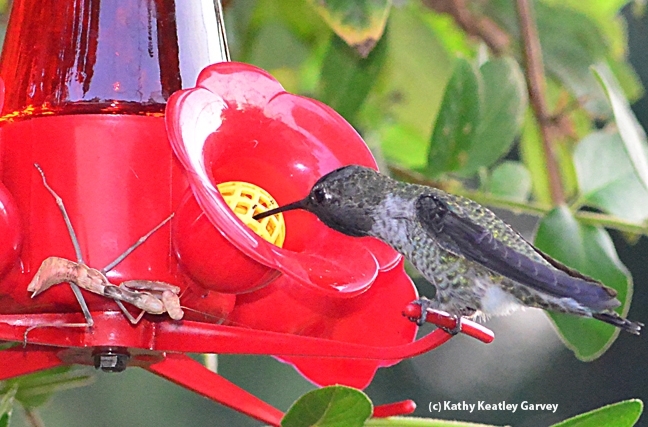
Hummingbirds eat insects and insects eat hummingbirds. Here a praying mantis lurks by a hummingbird feeder. It was quickly removed to another spot. (Photo by Kathy Keatley Garvey)
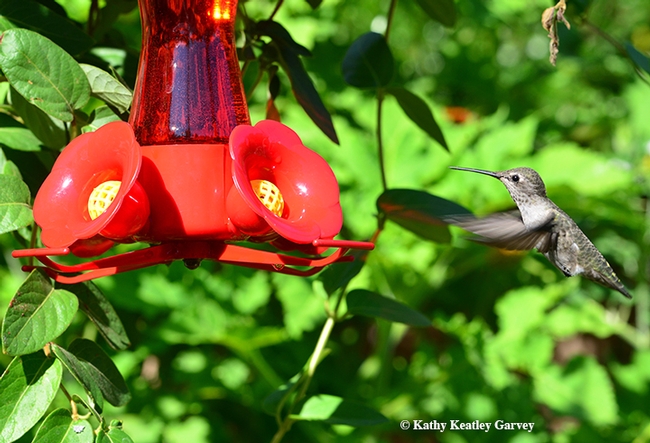
A hummingbird flies in for a quick burst of energy. It is best not to use red dye in a feeder; some companies make hummingbird feeders with red glass. (Photo by Kathy Keatley Garvey)
UC Davis Community Ecologist Rachel Vannette: Hellman Fellowship to Research Pollinator Microbiomes
Congratulations to community ecologist Rachel Vannette, assistant professor in the UC Davis Department of Entomology and Nematology: she was just selected as one of the 11 campus recipients of a Hellman Fellowship grant. Vannette, who researches...
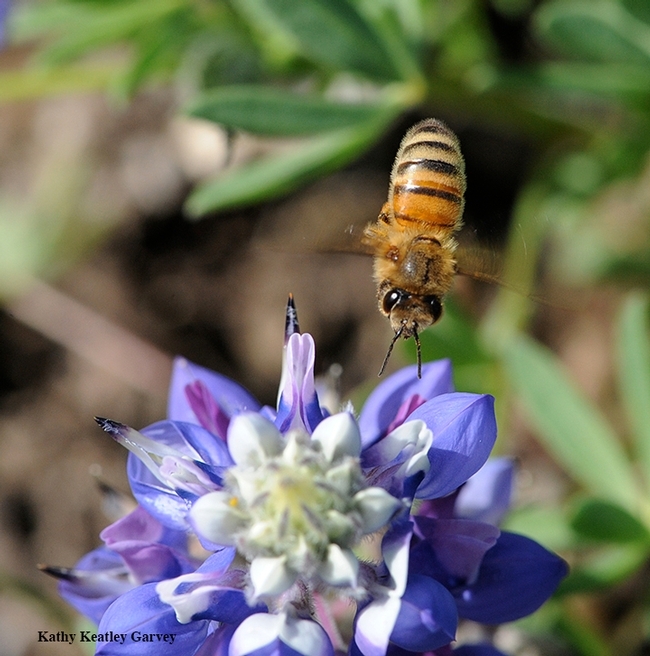
A honey bee heads for a lupine blossom. Nectar-living microbes release scents or volatile compounds, too, and can influence a pollinator’s foraging preference, according to UC Davis community ecologist Rachel Vannette, recipient of a Hellman Fellowship. (Photo by Kathy Keatley Garvey)
Watch Out!
The hummingbirds seemed apprehensive. They'd fly to the feeder, stop in mid-air, and turn back. What was keeping them from the feeder? A closer look revealed what the casual observer wouldn't notice: a praying mantis. Was the mantis a predator...
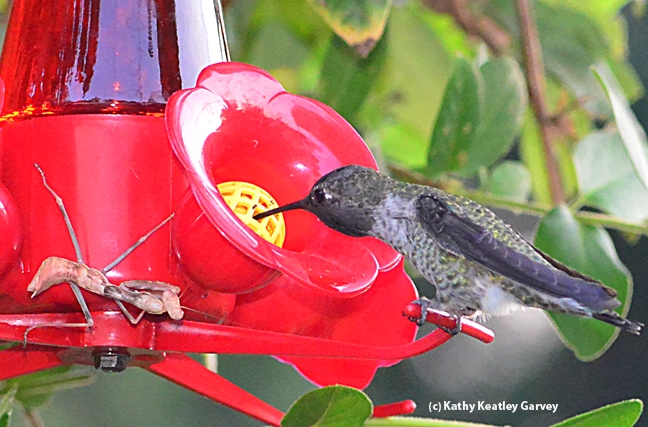
A praying mantis is sprawled out on a hummingbird feeder, as a hummer takes a drink. (Photo by Kathy Keatley Garvey)
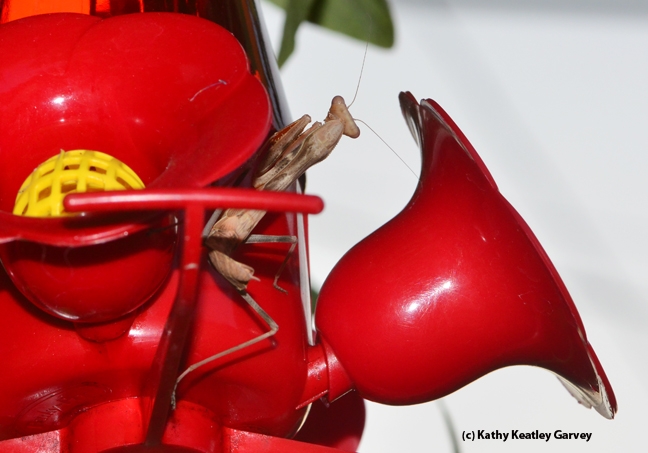
The praying mantis moves to another spot. (Photo by Kathy Keatley Garvey)
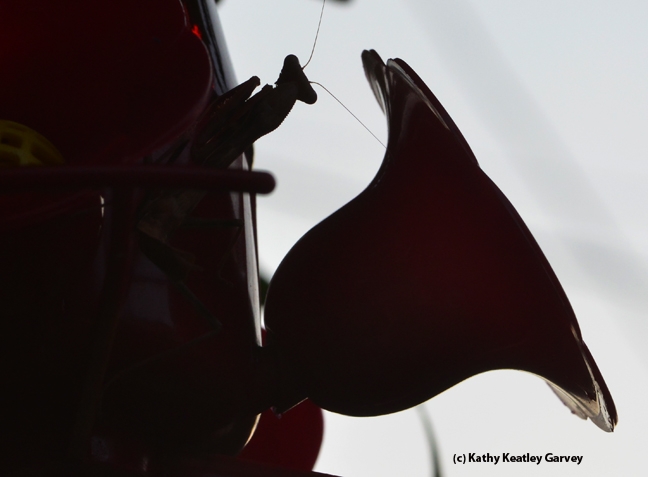
Silhouette of the praying mantis lying in wait. (Photo by Kathy Keatley Garvey)
Dining Where They're Not Wanted
If your hummingbird feeders are filled with that oh-so-tantalizing sweet sugary syrup, you may be attracting not only hummers, but honey bees, too. In fact, the bees may be crowding out the hummers. Just how do you keep your hummers happy and the bees...
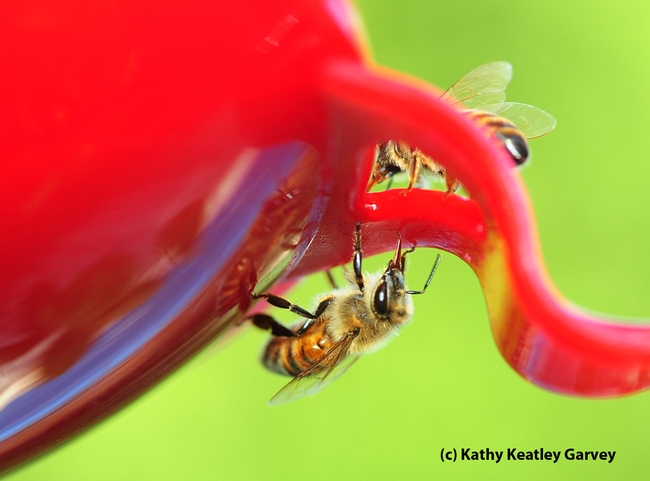
Honey bees licking the surface of a hummingbird feeder. (Photo by Kathy Keatley Garvey)

Hummers can reach this syrup but the bees cannot. (Photo by Kathy Keatley Garvey)

